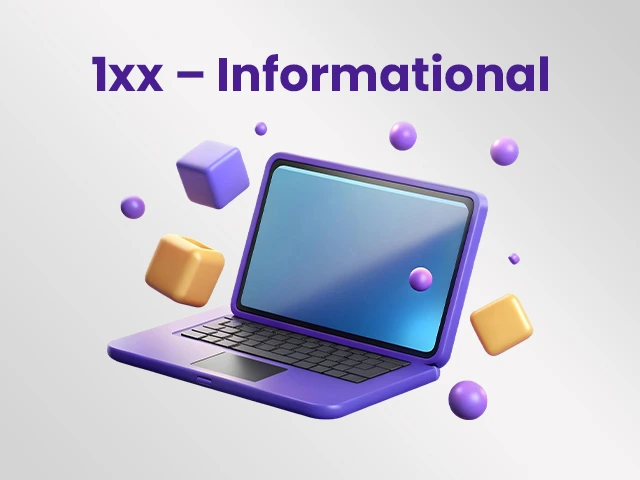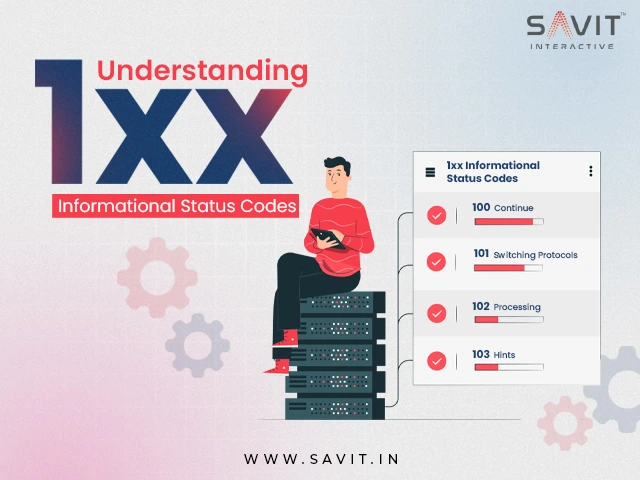Website performance and reliability depend heavily on how servers and clients communicate using standardized response messages. Among the most overlooked yet essential categories within the HTTP status codes family is the 1xx series – known as Informational Status Codes. These aren’t the flashy “404 Not Found” or critical 503 service unavailable types. Instead, they quietly operate behind the scenes, ensuring smoother request-response workflows.
While often invisible to end users, HTTP response codes play a critical role in optimizing data transfer between clients and servers, especially in applications involving APIs, streaming, and modern asynchronous operations.
Let’s break down what these 1xx codes are, why they matter, and how they function in real-world scenarios.
What Are 1xx HTTP Status Codes?
The 1xx status codes fall into the Informational category of HTTP status codes, indicating that the initial part of the request has been received and the client should continue with the request or ignore the response if the request has already been completed.
These codes don’t represent errors or successful operations. Instead, they serve as interim responses and are primarily used in more complex request scenarios, such as persistent connections or protocol upgrades.
Why 1xx Codes Matter in the Real World
Even though users don’t see 1xx codes on the front end, they are vital in ensuring efficient communication between client and server, especially in the following contexts:
- Optimizing data transmission for large payloads
- Ensuring protocol flexibility with WebSockets and HTTP/2
- Supporting asynchronous operations in APIs
- Improving compatibility across legacy and modern systems
For developers working with api status codes or middleware layers, understanding 1xx codes can enhance control over data flow and improve application performance.

A Closer Look at Key 1xx Status Codes
1. 100 Continue
The server sends the 100 Continue status to inform the client that the initial part of the request has been received and that it can proceed with the rest of the request.
Use Case:
Imagine you’re uploading a large file through a POST request. Rather than sending the entire payload simultaneously, the client first sends the request headers with an Expect: 100-continue header. The server responds with 100 Continue if it’s ready to receive the body, avoiding unnecessary data transfer if the request would otherwise be rejected.
Why It Matters:
- Reduces bandwidth waste
- Prevents unnecessary uploads
- Offers more efficient server-client negotiation
2. 101 Switching Protocols
The 101 Switching Protocols status code tells the client that the server agrees to switch protocols as requested. This is commonly used during protocol upgrades—from HTTP/1.1 to WebSockets.
Use Case:
WebSockets are often initiated using an HTTP handshake. The client sends a request with Upgrade: WebSocket, and if the server supports it, it responds with 101 Switching Protocols, indicating the switch from HTTP to the WebSocket protocol.
Why It Matters:
- Enables modern real-time communication features
- Offers support for bi-directional data flow
- Used in apps like chat systems, gaming servers, or collaborative tools
3. 102 Processing
Defined by WebDAV (an extension of HTTP), the 102 Processing code informs the client that the server has received and is processing the request, but no response is available yet.
Use Case:
If a client sends a WebDAV request that could take time (like querying or modifying large resource sets), the server sends 102 Processing to prevent timeout issues or assumptions of failure.
Why It Matters:
- Keeps the client informed during long operations
- Prevents unnecessary request retries
- Crucial in asynchronous or distributed environments
Misconceptions Around 1xx Codes
Many developers ignore or disable support for 1xx codes, assuming they’re irrelevant. In reality:
- HTTP clients like cURL and Postman handle 1xx codes silently in the background unless explicitly configured
- Load balancers and proxies may strip or ignore 1xx responses unless headers are set correctly
- APIs and microservices, especially those built for scale, can benefit from optimized request handling using 1xx codes
Overlooking these codes can limit application efficiency and lead to misunderstanding errors, especially when dealing with api status codes or legacy fallback systems.
How 1xx Codes Differ from Other HTTP Status Codes
| Status Code Class | Meaning | Example |
| 1xx | Informational | 100 Continue |
| 2xx | Success | 200 OK |
| 3xx | Redirection | 301 Moved Permanently |
| 4xx | Client Error | status code 400 |
| 5xx | Server Error | 503 service unavailable |
SEO, Server Behavior & 1xx Codes
You may wonder how these low-profile HTTP status codes impact SEO or digital marketing. Here’s the answer: While Googlebot typically does not act on 1xx codes directly, how your server responds to various HTTP requests—especially regarding redirects, availability, and communication—can affect crawlability.
For example:
- Proper management of HTTP response codes improves indexability
- Misconfigured server layers that misinterpret 1xx or 5xx codes can lead to crawl errors
- Using status headers correctly contributes to the overall technical SEO health
So, as you continue 100, your ranking is not directly affected; it plays a background role in a well-contained server setup that Googlebot appreciates.
Although often ignored, the 1xx informative status code is important for modern web communication. Whether it improves efficiency through 100, enables real-time communication with 101 protocol switches, or manages Toolsonic functions via 102 processing, these codes act as silent guardians of network performance.
In an era where speed, accountability, and seamless experiences define online success, understanding each layer of the HTTP protocol—including the understated 1xx codes—becomes a competitive advantage for developers and businesses.
From 503 service unavailable issues to status code 400 errors, mastering the subtle but powerful http status codes isn’t just about troubleshooting. It’s about building smarter, faster, and more adaptive digital ecosystems. And when backed by the expertise of a leading SEO company in India, these technical foundations become a launchpad for lasting online visibility and performance.



